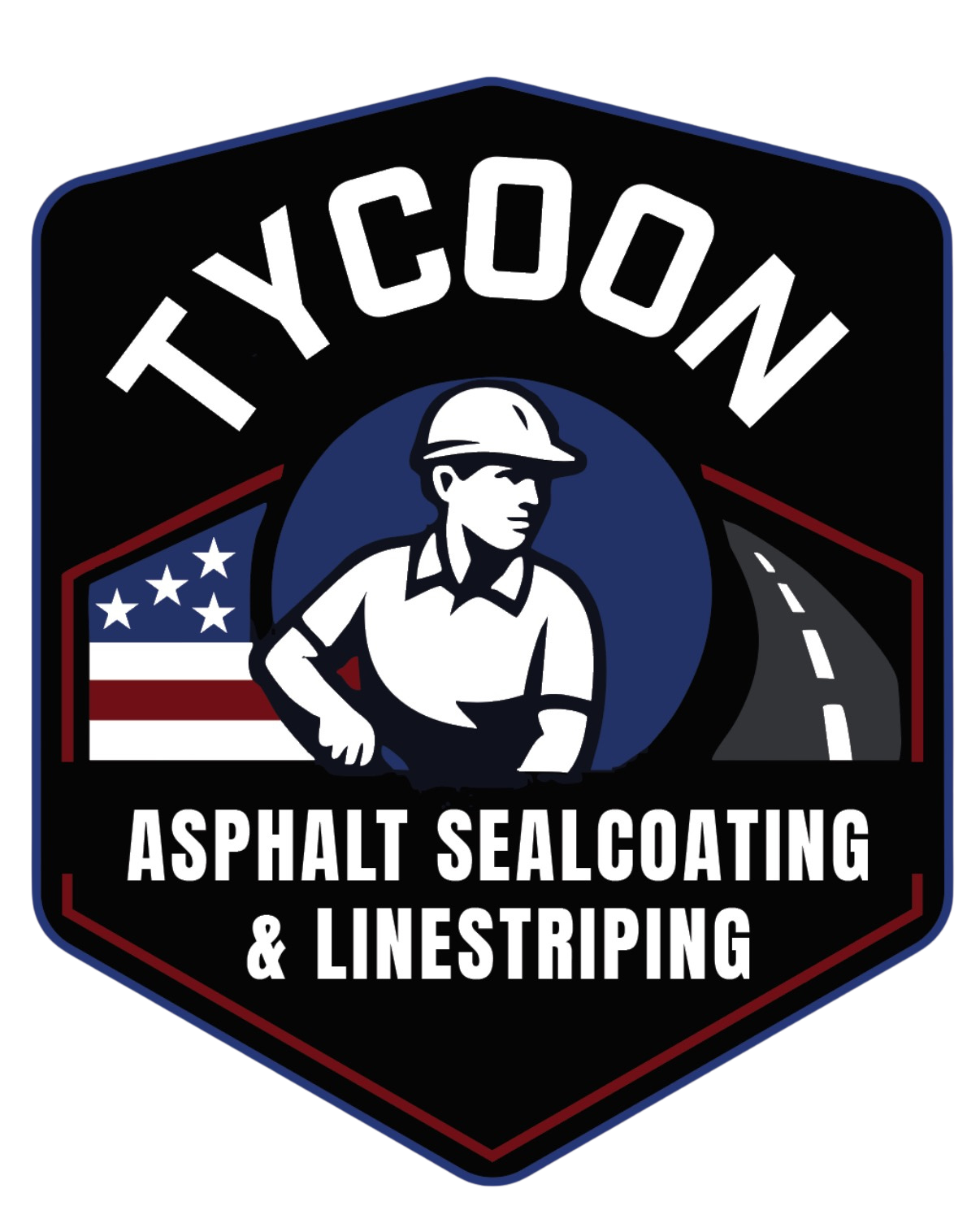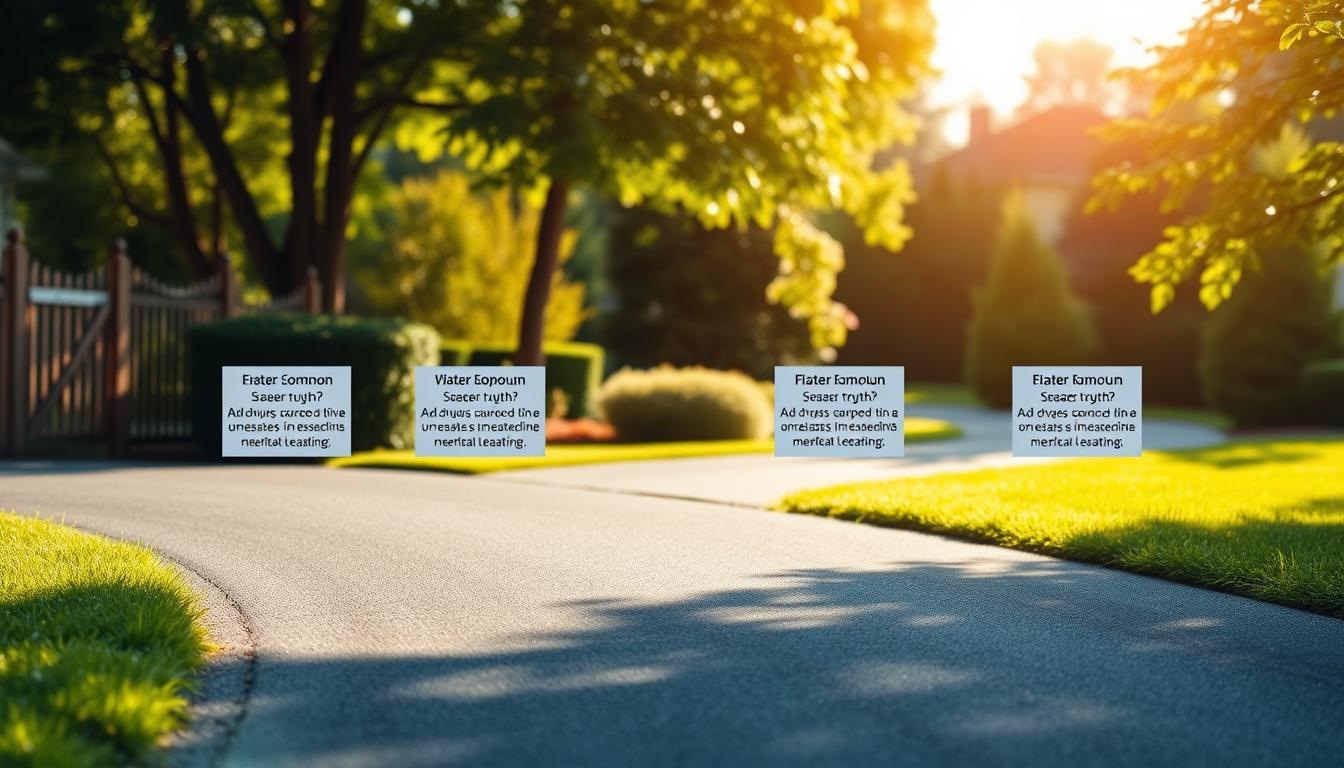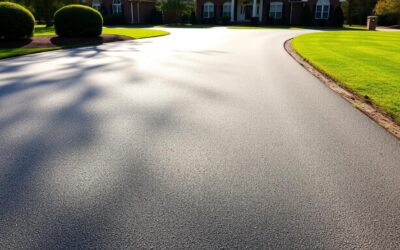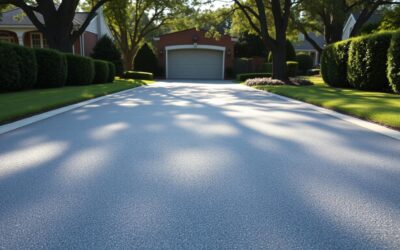We hear a lot of claims about pavement care, and we want to lead with facts. In this guide we separate rumor from truth so you can protect your property with clear, useful information.
A proper protective coat helps asphalt resist UV rays, rain, and road chemicals. It slows oxidation and reduces the chance of cracks and potholes, but it is preventive—not a repair. We recommend reapplying every two to three years based on traffic and conditions.
Material choice and contractor skill shape how long a job lasts. Asphalt is highly recyclable, and most runoff issues come from oil leaks, trash, and debris, not the pavement itself. Coal tar sealants are regulated and their PAHs do not dissolve easily in water.
Throughout this article we will debunk common ideas, explain timing and products, and help you plan smart maintenance so your driveway or parking lot stays durable and professional.
What sealcoating really does for your asphalt in North Carolina today
Good pavement care depends on understanding what protective coatings actually do for asphalt. We’ll explain how they protect the surface and what to expect over time.
Beyond appearance: how it shields pavement from UV rays, water, and chemicals
These coatings form a thin barrier that slows oxidation from sunlight and UV rays. That delay keeps surface asphalt from drying and stiffening too fast.
The membrane also resists water penetration that can weaken the base and cause freeze‑thaw damage over time.
Quality mixes repel gasoline, oil, and common road chemicals so binders stay intact and stains are minimized.
Why preventive treatment extends parking lot and driveway life and reduces repairs
We always repair cracks and potholes first; the protective layer is preventive, not a fix. Applied within the first year on new asphalt, it helps preserve the surface.
Most parking areas benefit from reapplication every 2–3 years depending on traffic and weather. Proper process—cleaning, edge work, and calibrated application—drives how long results last.
Choosing the right materials and focusing on quality during application reduces reactive repairs and boosts service life. Learn more about smart timing and options for parking lot sealcoating here.
Sealcoating myths North Carolina homeowners hear—and the truth behind them
Many statements about pavement protection circulate widely, so we’ll set the record straight with clear facts.
Myth: It’s only cosmetic; Reality: It slows oxidation and resists chemicals
Appearance improves, but the real value is protection. A proper coat slows UV-driven oxidation and helps repel oil and road chemicals that break down binders.
Myth: It fixes cracks; Reality: Repairs come first
We always repair cracks and potholes before applying a protective layer. The treatment seals sound surface, not structural damage.
Myth: New asphalt doesn’t need protection; Reality: First-year care helps
Applying a protective layer in the first year preserves texture and color and reduces early oxidation on new pavement.
Myth: All products and contractors are the same; Reality: Materials and quality matter
Material choice, surface prep, and application thickness affect results. Better materials and skilled crews yield longer-lasting coverage.
Myth: You must coat every year; Reality: Most lots need it every 2–3 years
Over-frequent work can cause peeling. We recommend a 2–3 year cadence based on traffic and weather to avoid flaking and extra repairs.
Myth: It harms the environment; Reality: Asphalt is recyclable and runoff often comes from oil and debris
Asphalt is widely recycled. Much contamination begins with vehicle oil leaks and trash, not the pavement itself. Regulatory bodies do not list coal tar products as hazardous, and PAHs are poorly soluble in water.
Turning myths into smart maintenance: timing, products, and the right contractor
The right timing and products turn common pavement ideas into a practical maintenance plan. We focus on weather windows, proper materials, and a documented process so your parking and lot surfaces last longer.
Best timing for present climates: plan around rain, temperature, and curing time
We schedule work when forecasts show several dry days and mild temperatures so the sealcoating applied can cure properly. Humidity and surface temperature readings guide start times and reduce the risk of tackiness or peeling.
Most sites follow a 2–3 year maintenance cycle based on traffic, shade, and use. Over-sealing too soon leads to cracking and flaking, so we right-size the time between coats.
Product matters: selecting quality asphalt coatings for durable, even coverage
We specify products proven to resist UV rays, water, and common road chemicals. Materials with the right solids content give an even film build without over-thickening the parking lot surface.
Our process includes cleaning, edge work, repairs, calibrated spray or squeegee application, and controlled curing. Choosing a contractor who documents mix designs and verified application rates ensures the job meets specs and delivers long-term value.
Protect your property with facts, not myths
Smart property care starts with facts, not guesses about pavement treatments.
We state the reality: sealcoating is a preventive step that helps extend the life of asphalt and reduces surprise repairs. It protects surface asphalt from UV, water, and common chemicals but is not a repair substitute.
Plan reapplication every 2–3 years based on traffic and weather. Keep lots tidy—simple housekeeping to limit oil and debris lowers runoff and improves curb appeal for people visiting your property.
Do a quick annual walk‑through to catch issues early. Then schedule paving, repairs, and protective coating in the right order to protect your property investment.
.




0 Comments